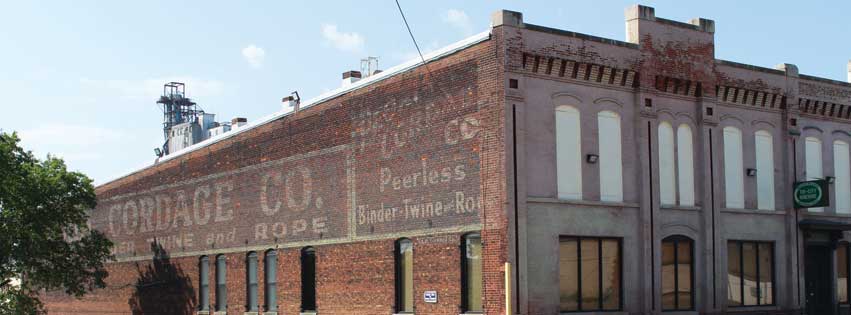“This is our 15th year, so we wanted to do it up a little bit,” explains Joe Richey, referring to the Prairie Center of the Arts Alumni Invitational Exhibition—an annual showcase of artwork from past resident artists.
“I think it’s the 16th year,” Michele Richey interjects thoughtfully.
Joe pauses, considering his wife’s correction. “Well, if we had the first alumni show in 2004…” His voice trails off, then he shrugs with a chuckle. “Whatever! Close enough!”
The Richeys have quietly supported artist residencies at the Prairie Center of the Arts (PCA) since 2003—and in doing so, they have made an indelible mark on the Peoria community. The organization was among the first to offer studio and gallery space to artists in Peoria’s now-burgeoning Warehouse District. This summer, it will highlight artwork from more than 70 past residents in a massive alumni showcase—a celebration of more than 15 years of art at the PCA.
Open for Creativity
In 1971, Joe and Michele Richey founded Tri-City Machine Products, Inc., a full-service machine shop that repairs and rebuilds equipment for a wide range of industries. The business is housed in a massive brick building built in 1888 for the Peoria Cordage Company, once a major manufacturer of rope and twine, and much of its interior sat vacant. The Richeys had ample space—they just needed to find a way to put it to use.
Years later, they picked up a book that would change the course of their lives forever. Published by the Alliance of Artists Communities, Artists Communities: A Directory of Residencies That Offer Time and Space for Creativity detailed a network of artist residency programs across the country. The Richeys were intrigued—and immediately saw potential in their 90,000-square-foot building. Upon visiting the Penland School of Crafts in North Carolina, they decided to bring a similar residency program to Peoria’s Warehouse District.
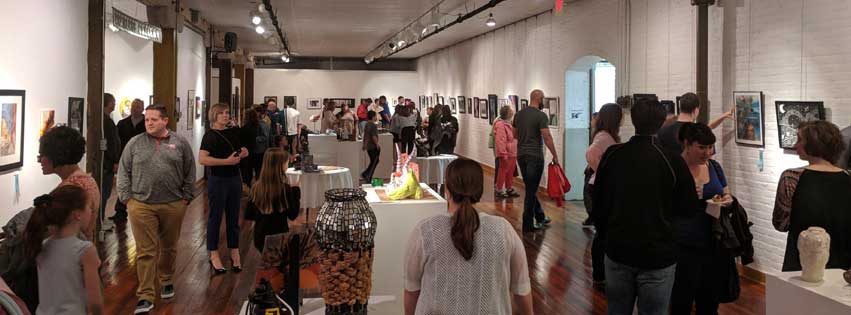
“We thought the building called for art,” Michele recalls. “We started cleaning it out and eventually came up with a 6,000-square-foot gallery.” Pausing, she turns to Joe. “And how big are the studios?”
“There is probably close to 12,000 square feet,” he notes. “It evolves.”
As with any craft or profession, new ideas can flourish amidst a change of environment. By offering the ability to pour unencumbered time and energy into their creative work, residencies allow artists to benefit from this shift of perspective. Reflecting on his time at the PCA, photographer Christian Arrecis says he was challenged to create new work. “It allowed me to experiment and take some chances,” he explains. “I am always grateful for having had that experience.”
For Elizabeth Mead, sculptor and Professor of Art at the College of William & Mary in Williamsburg, Virginia, the PCA residency was a turning point. “I had worked predominantly in plaster, but was feeling… I needed to move on,” she recalls. “While at the Prairie Center of the Arts, I experimented with silk, gauze, burlap, sound and—thanks to the encouragement of Joe and Michele—I translated one of my drawings into rubber using the waterjet laser cutter.”
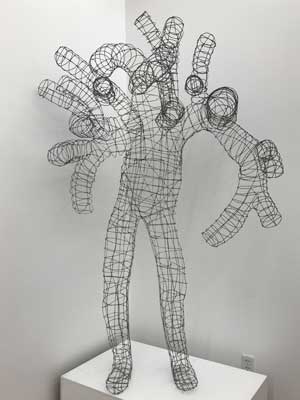
The Richeys’ machinery background affords access to these kinds of tools, allowing them to accommodate specialized forms of art. In addition, Joe Richey is an artist himself, which uniquely positions him to understand artists’ needs. The PCA is well known for its print shop, which offers state-of-the-art printmaking and letterpress equipment and is run by Western Illinois University professor Susan Czechowski, one of four current volunteer residents. Artists also have access to a digital lab—ensuring they have all the equipment, technologies and tools needed to facilitate the creative process.
Cross-Pollinating Artists
Over the past decade and a half, the PCA has hosted more than 200 artists from around the world. Their annual alumni shows—curated in recent years by Ken and Barb Hoffman (both former residents)—have historically showcased regional artists. “But this year we wanted to pull more people back in and reconnect them with the Prairie Center,” Joe explains.
“I just got an email from an artist from Bogatá, Columbia, who asked if he could come back,” he continues, referring to Jeronimo Villa, a former resident who left behind one of his intricate wire sculptures. Chuckling, he adds, “I said, of course he could!”
Until 2014, out-of-town residents like Villa stayed in a five-bedroom home in Germantown Hills owned by the Richeys. “We had composers, writers, visual artists, sculptors… a lot of different media forms,” Michele notes, “which made it really interesting.”
This diversity fosters a unique cross-pollination of creativity—which fine art painter Sherri Burritt looks back upon fondly. “One of the benefits for me was interacting with the other artists,” she affirms. “It fueled my fire for creating that only an artist group can.” Fiber artist Dana Baldwin—who, the Richeys note, is currently working on an exciting project (“No photos!”)—feels similarly. “There were many opportunities to engage in intellectual conversations with peers on topics surrounding art production… which helped me grow personally and as an artist.”
While maintaining a house for the artists eventually became cost-prohibitive, Joe and Michele do all they can to accommodate those who need a place to stay. “We have an artist coming from Paris this summer,” Joe says of sculptor and installation artist Martin Monchicourt, whose wife was a resident in 2013. “When we get interest and they need housing, we look to see what we can find.”
The Richeys do these things because they see the benefits of bringing in artists from outside the Peoria area. The camaraderie they build often leads to collaboration—and sometimes on a grand scale. Monchicourt, for instance, will be staying with former resident artist Natalia Villanueva Linares and her husband Earl Power Murphy, who have spearheaded Yaku, a collective of young Peorians working to repurpose the Hale Memorial Church into an international culture center.
“We are trying to get him and Natalia to do an outdoor installation for the show,” Michele notes. “We’ll see what happens,” Joe responds. “You never know when you get Natalia involved!”
The couple bursts into laughter, their shared memories conjuring unmitigated joy. “She goes big!” Michele exclaims, referring to Villanueva Linares’ large-scale installation work. Soon, they’re chatting about logistics… a familiar conversation for the couple who has showcased the work of so many artists in Peoria.
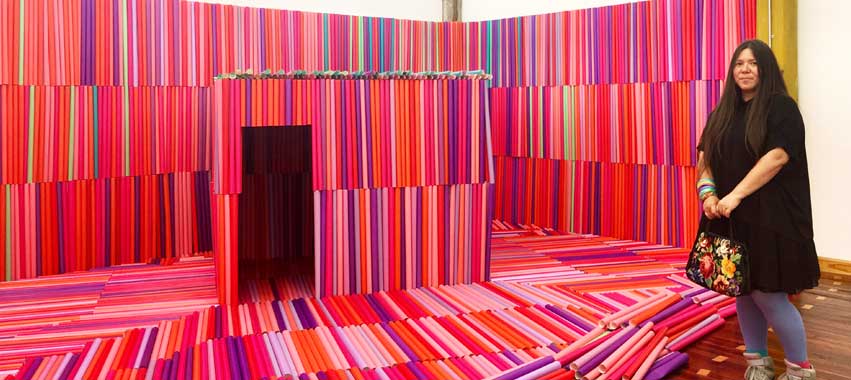
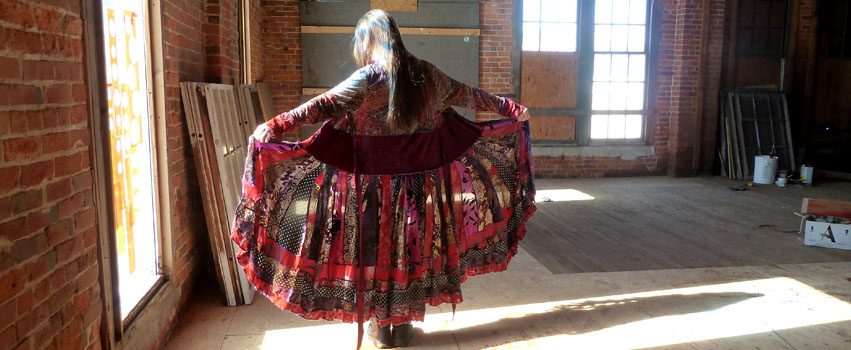
A Monumental Impact
It is difficult to overstate the importance of the PCA—both for the artists themselves and for the community at large. “When you look at the number of artists in the Peoria area, quite a few have been through our program. They immerse themselves in the community and get involved with what other people are doing,” Joe reflects.
And some of the artists decide to stay and call Peoria home—including Erin Buczynski, Director of University Galleries, Exhibitions and Collections at Bradley University; Dr. John Orfe, Visiting Professor of Music at Illinois Wesleyan University; and artist Dawn Gettler, who stayed for several years and made a lasting impact at the PCA. Buczynski shares that she cannot imagine her life without the PCA experience: “I would not be living here in Peoria, I would not be working at Bradley, and I likely would have never met my husband and would not have my beautiful family,” she says. “I am so grateful for it.”
Clearly, the Richeys care deeply about the artists who have been impacted by their residency program—and the artists feel likewise. Natalia Villanueva Linares notes that her time at the PCA inspired her desire to create opportunities for artists from around the world to present their work in Peoria. “I take my high regard for the program everywhere I go, recommending that artists apply and enjoy the generous amount of space given by the PCA to their residents.”
Zachariah Chyanne Benson was still pursuing his bachelor’s degree when he became a resident in 2011. The PCA allowed the sculptor to explore what being a professional artist would look like—and he felt the impact as well. “The staff and other artists were very encouraging and accommodating, which allowed me to explore ways of making that still impact my practice today.”
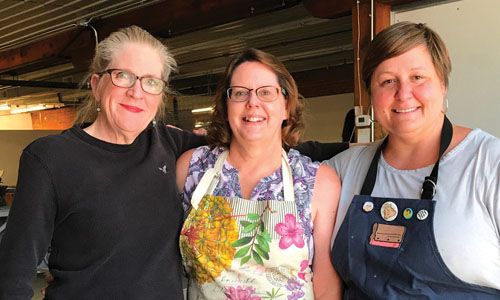
While the Richeys more or less singlehandedly pay for the residency program, the PCA is a nonprofit and they welcome donations. “We don’t try to compete with the other arts organizations in town,” Joe notes, “but we do offer our gallery to not-for-profits.” Bradley University, for example, holds its BFA show and some MFA shows there, while the Mid Illini Art Show features artwork from local high school students. This November, the PCA will host “(FE)male Pour Peoria”—the first all-female-identified, artist-run iron pour event in Peoria’s history. The event is part of the Citywide Celebration of Women in the Arts, an ArtsPartners of Central Illinois program, and is open to women of any (or no) experience.
“We have a really hoppin’ art scene now—but when we [started] this 15 years ago, it was slow. Things have changed,” Joe reflects. That is in large part due to the efforts of the Richeys, the resident artists and others who have contributed to the community at Prairie Center of the Arts. Their impact has been positive, monumental and lasting—a permanent shift in Peoria’s cultural landscape. PM
The Prairie Center of the Arts is located at 1506 SW Washington Street in Peoria. Gallery hours are Monday through Friday, 9am to 3pm, or by appointment. Follow them on Instagram or Facebook, or visit prairiecenterofthearts.org.


